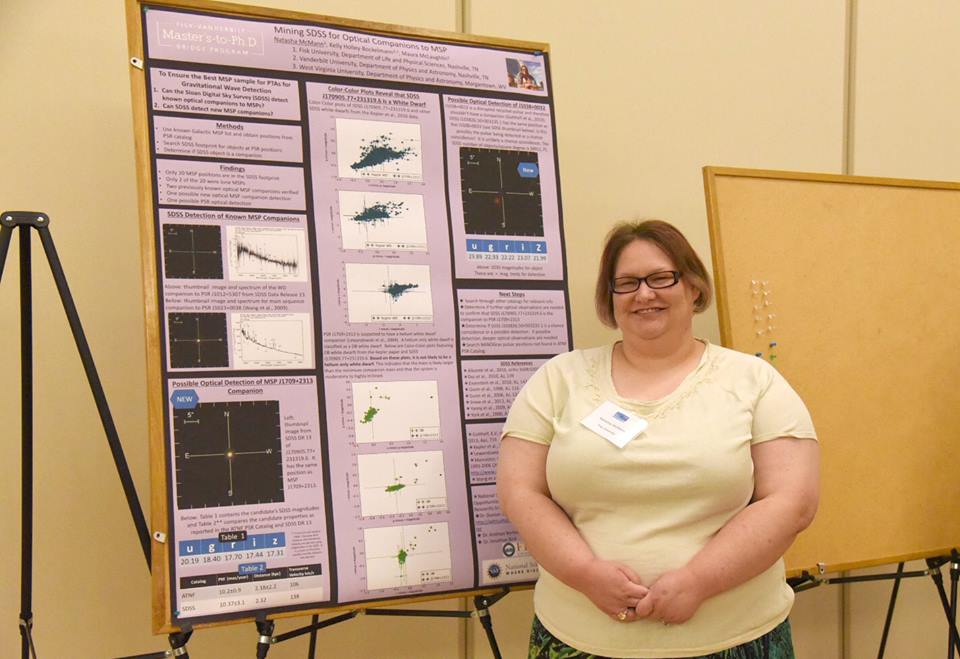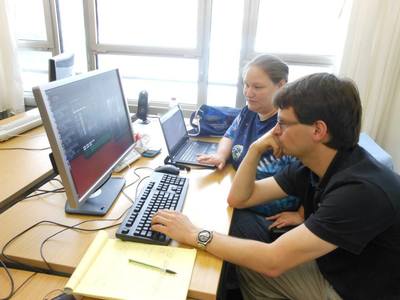Current Research
I am trying to determine if the Sloan Digital Sky Survey can detect optical companions to millisecond pulsars (MSPs). Knowing if a MSP has a companion is important because MSPs are being used in pulsar timing arrays to try and detect gravitational waves. Astronomers need to know as much about the individual MSPs to help lower the threshold for detection of gravitational waves.
Past Research
My first research project was to create an online database for millisecond pulsars. My efforts can be seen here.
I combed data from the Green Bank Telescope and Parkes Telescope searching for fast radio bursts . I have also reduced data from the GBT to make plots. I used these plots to confirm if a known pulsar or rotating radio transient were detected.
I spent two summers in Bielefeld, Germany working at the Universität Bielefeld timing MSP J1640+2240. The goal was to determine the mass of the white dwarf companion and then infer the mass of the pulsar using Kepler's Laws.
I combed data from the Green Bank Telescope and Parkes Telescope searching for fast radio bursts . I have also reduced data from the GBT to make plots. I used these plots to confirm if a known pulsar or rotating radio transient were detected.
I spent two summers in Bielefeld, Germany working at the Universität Bielefeld timing MSP J1640+2240. The goal was to determine the mass of the white dwarf companion and then infer the mass of the pulsar using Kepler's Laws.
Photos of Dr. Joris Verbiest and me working on determining the mass of J1640+2240





